Talking games | Paranormasight
The greatest lie fiction tells is that it isn't true.
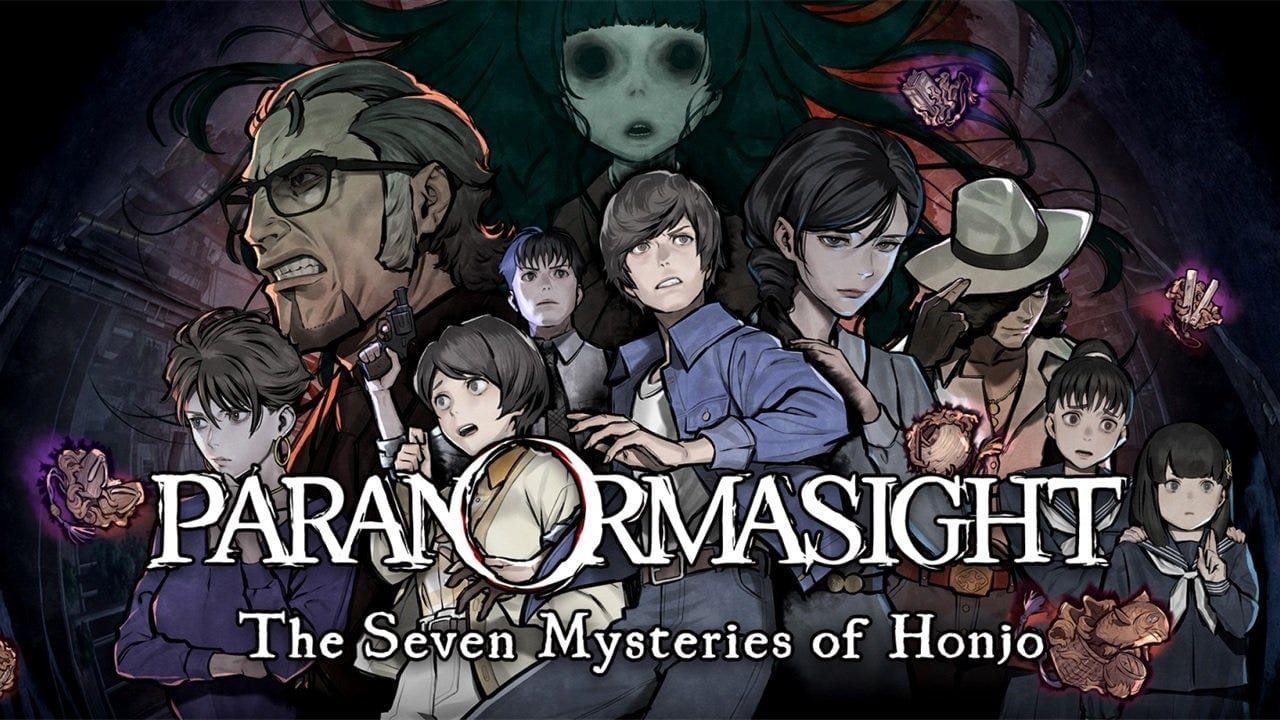
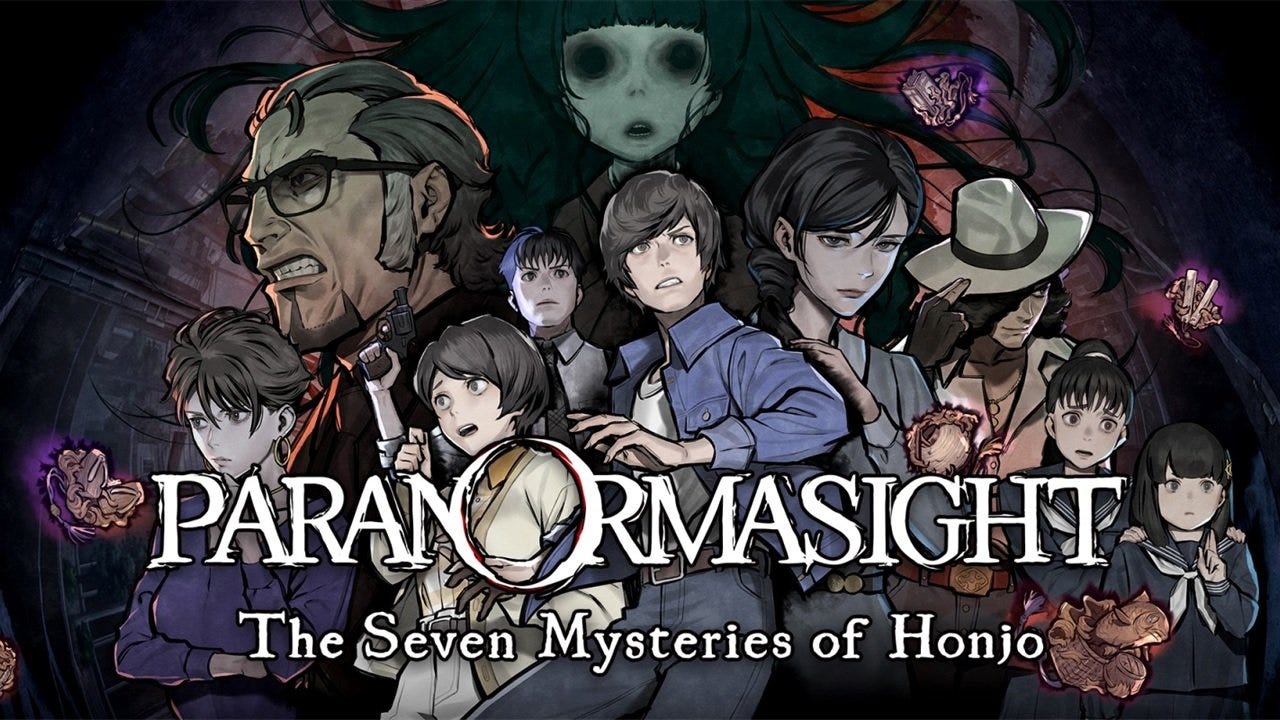
“This is a work of fiction. Any similarity to actual persons, living or dead, or actual events, is purely coincidental.”
Has there ever been a greater lie? Near every story starts or ends with those same words and every story lies about it. That’s how fiction works. It’s all lies on lies. Stories pretend to be true but aren’t at all; they insist they are false and are truer than anything.
Paranormasight: The Seven Mysteries of Honjo, the 2023 adventure game from Square-Enix, is no different. Except when it is.
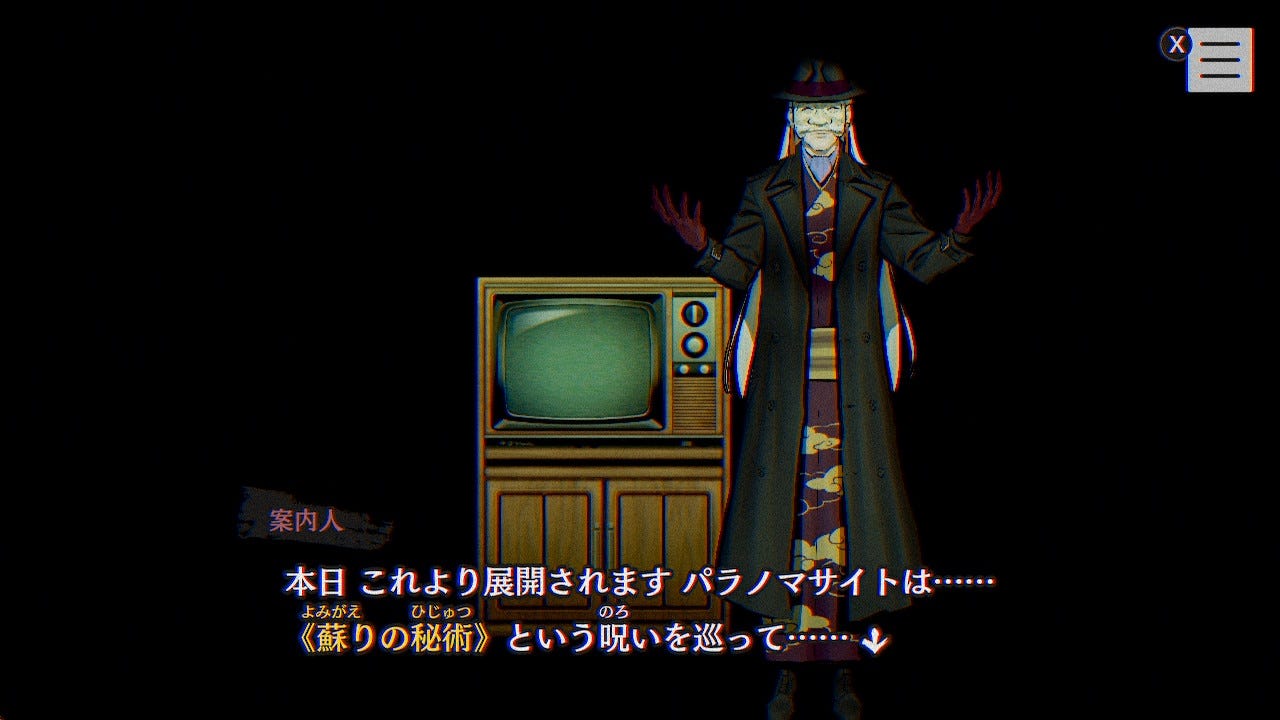
It starts like every story, like how this newsletter starts: absolving itself of any crime its existence might represent. It is a work of fiction. It is all purely coincidental. Except here, this information comes a little late, after it is made clear that the player character (ostensibly us) is watching a story play out on a television. In an instant, before things really even begin, the game twists itself, contorting the most basic scaffolding of commercial creative work into uneasy questions. Was it talking to you? Or to the character? What part is fiction and what part is not?
Before this, an old man next to the TV speaks to you; like a modern day kamishibai performer, he says he will tell us a story, the television his pictures. And then he “accidentally” shows you a spoiler. Over and over, the kayfabe of traditional narrative is breached.
This deeply metatextual playfulness is not new territory for writer and director Takanari Ishiyama. Through much of the 2000s, he wrote and directed the Kibukawa Ryousuke games — a series of pre-smartphone phone adventures with well over a dozen entries — centered around an eccentric detective and a game’s scenario writer named Ikurumi. Here, there is no statement that it’s all pretend. It’s just the opposite, each game purporting to be real cases lightly fictionalized by the character Ikurumi themselves.
Which is fun! Charming! But Ishiyama isn’t happy just being cute. Instead, he takes that hazy, confused relationship between truth and fiction and it as a weapon. Take the first Kibukawa Ryousuke game, Kamen Gensou Satsujin Jiken, which is a fierce, confrontational look at the games industry. Kamen Gensou sets itself up with a twisty plot of a video game developer desperate to prove an employee’s death was a murder instead of suicide from overwork in order to protect their image, and then immediately tells you: this is real. Even if it didn’t happen, this is reality.
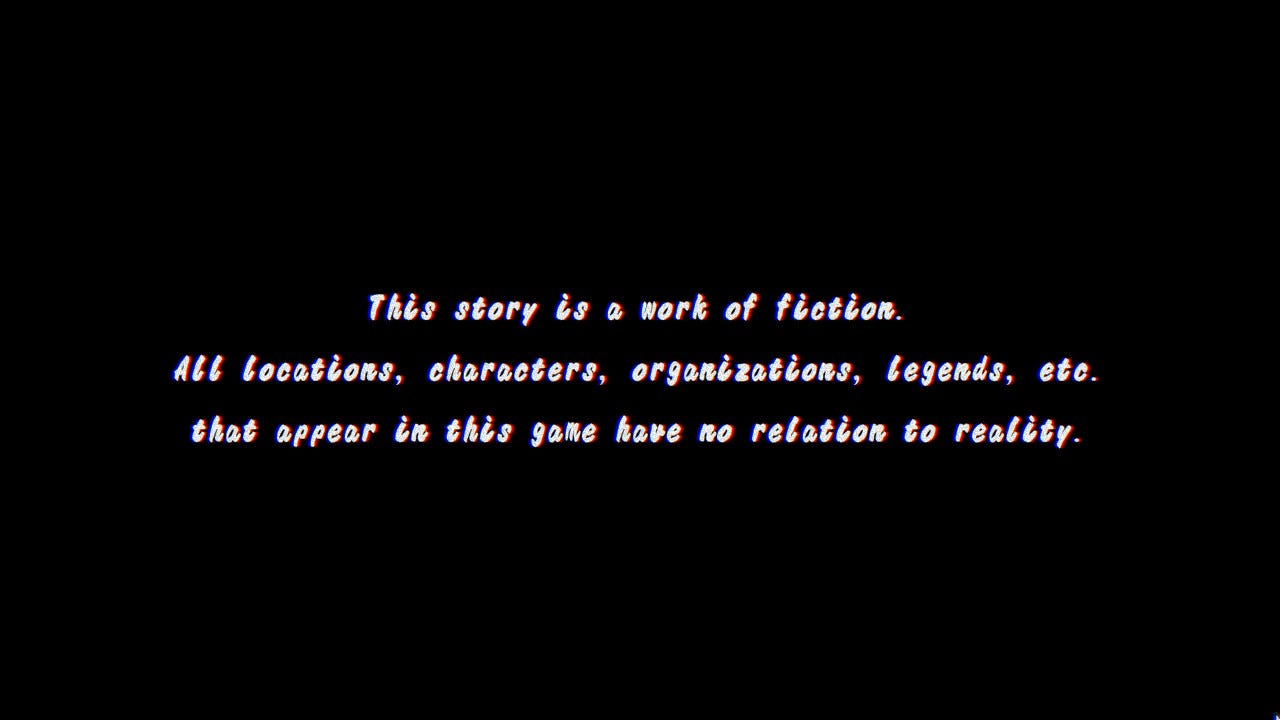
This is also largely the case with Paranormasight. When the story starts proper and you enter into the world presented on TV, you immediately come face to face with…a very real place: Sumida, a ward in Tokyo. If you wanted to, you could take a trip and visit the locations of the game, stand where digital life has been snuffed out for your own entertainment. The game makes no effort to pretend otherwise. It couldn’t — it is entrenched in real myth and legend profoundly connected to that land. This is a game deeply concerned with place and with history after all, with how the land we live on becomes us and we in turn become it; the people who lived where we stand changing, knowingly and not, the way we see the world. History and folklore make much so much of the identity of a place, and yet history and folklore are inevitably, on some level, fiction.
That seems to sum up Ishiyama’s whole M.O. It's real and it’s fake and above all else, it’s honest.
Paranormasight continues as a nonstop thrill ride, shifting from horror to detective fiction while taking a hammer to our conditioned relationship with the medium — puzzles requiring lateral thinking about the construction of the game itself and how the adventure genre is “supposed” to work — as a sort of meta-textual metaphor for our relationship to place. And the further you get, the more these contortions of medium build, and the story slowly crawls out from the game and the console and enters into our world like a vengeful spirit.
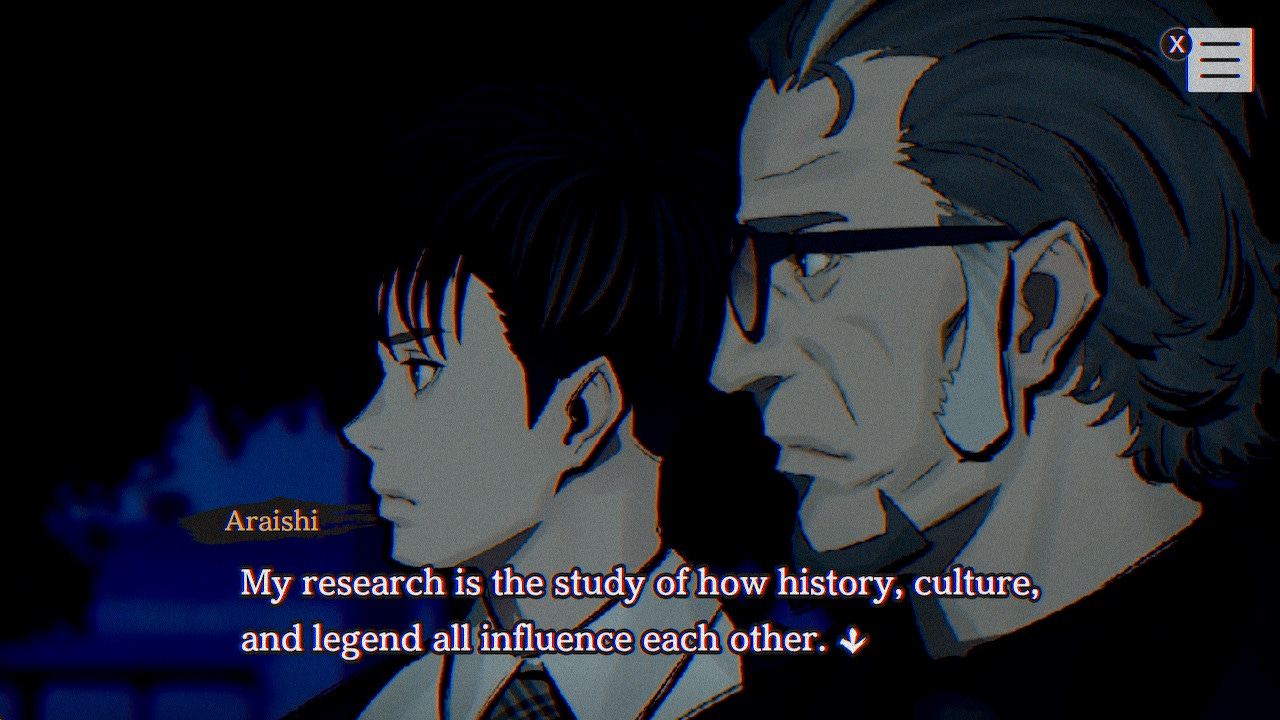
When it all finally ends, when questions are answered and all is laid bare, you return to the TV and the old man, and one more time are assured: this is just a story. It’s all made up.
But by then you know: that’s nothing but a lie.
Music of the Week: AQ! Ishii & Hiroko Taniyama - Kusunoki Gekijou
Halloween pop for occult loving ghoulies full of ominous midi, eerie spoken word, and off-kilter jams. Like a mansion Luigi hasn't vacuumed up yet. Heaven for a certain kind of spooks-freak (me). The fact that it's an image album (think soundtrack but for books) for the horror manga Kusunoki Gekijiou by Kei Kusunoki only makes it that much sweeter.
Movie of the Week: Honto ni Atta! Noroi no Video vol. 1
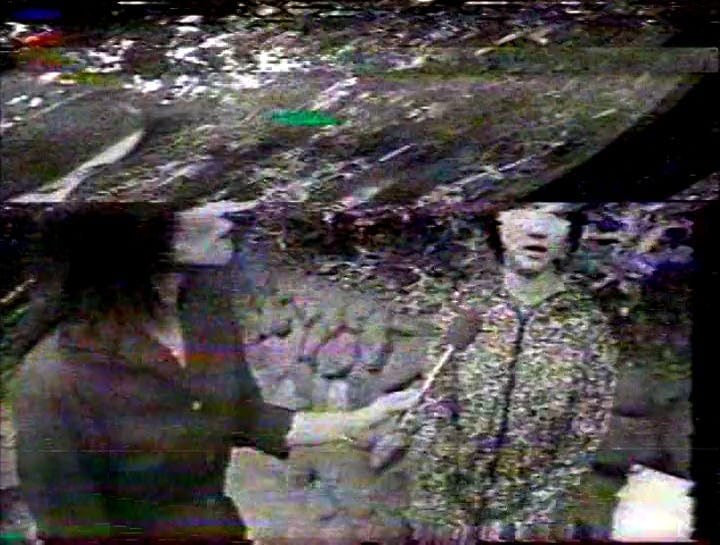
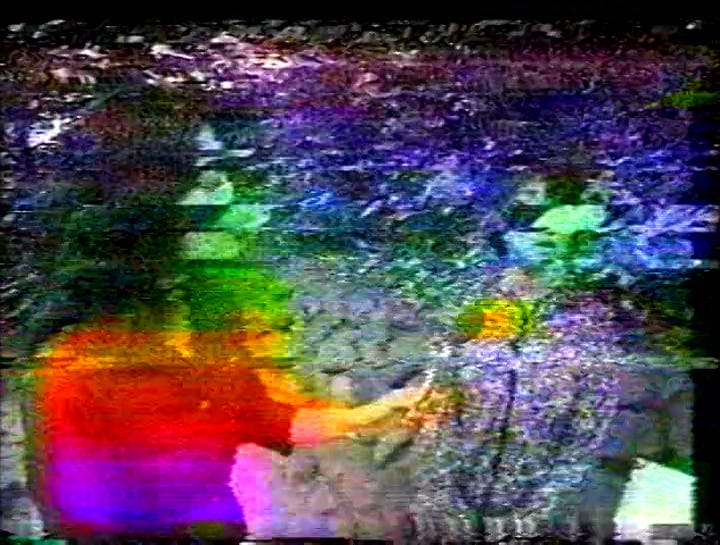

Go to any video store in Japan, find the horror section, and behold a wall of Honto ni Atta! tapes. A staple of the genre in Japan, the straight to vid series has well over 100 entries — some by significant names! — and is basically responsible for an entire genre of low-budget, low-key found footage scares.
Next week: a masterpiece gag manga!
oh, and here’s a great vid about Rei Ayanami-like characters

